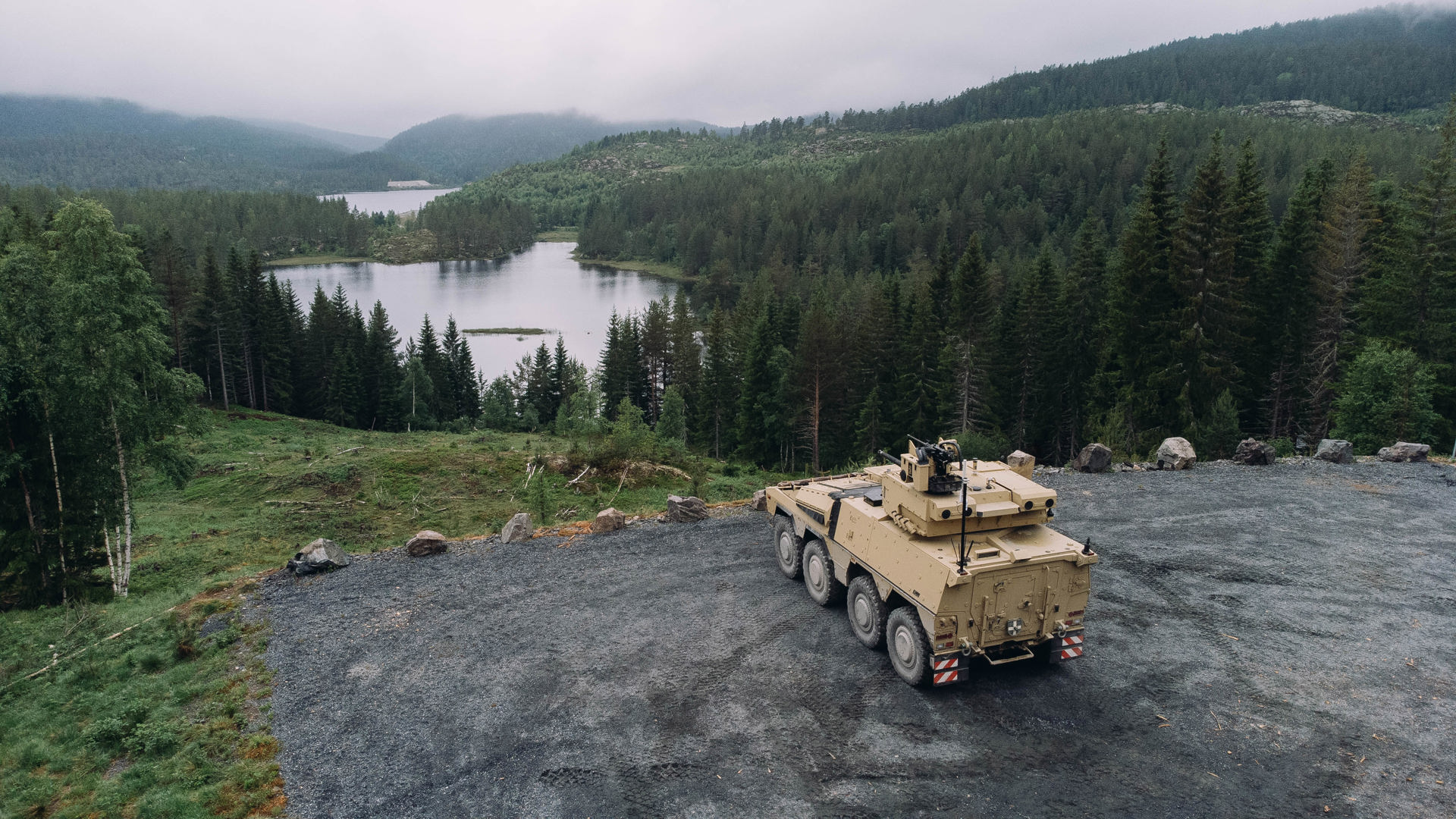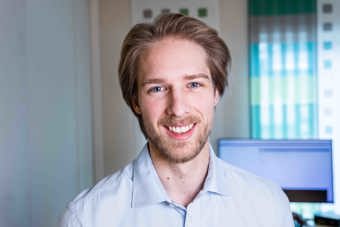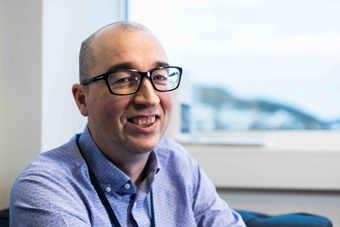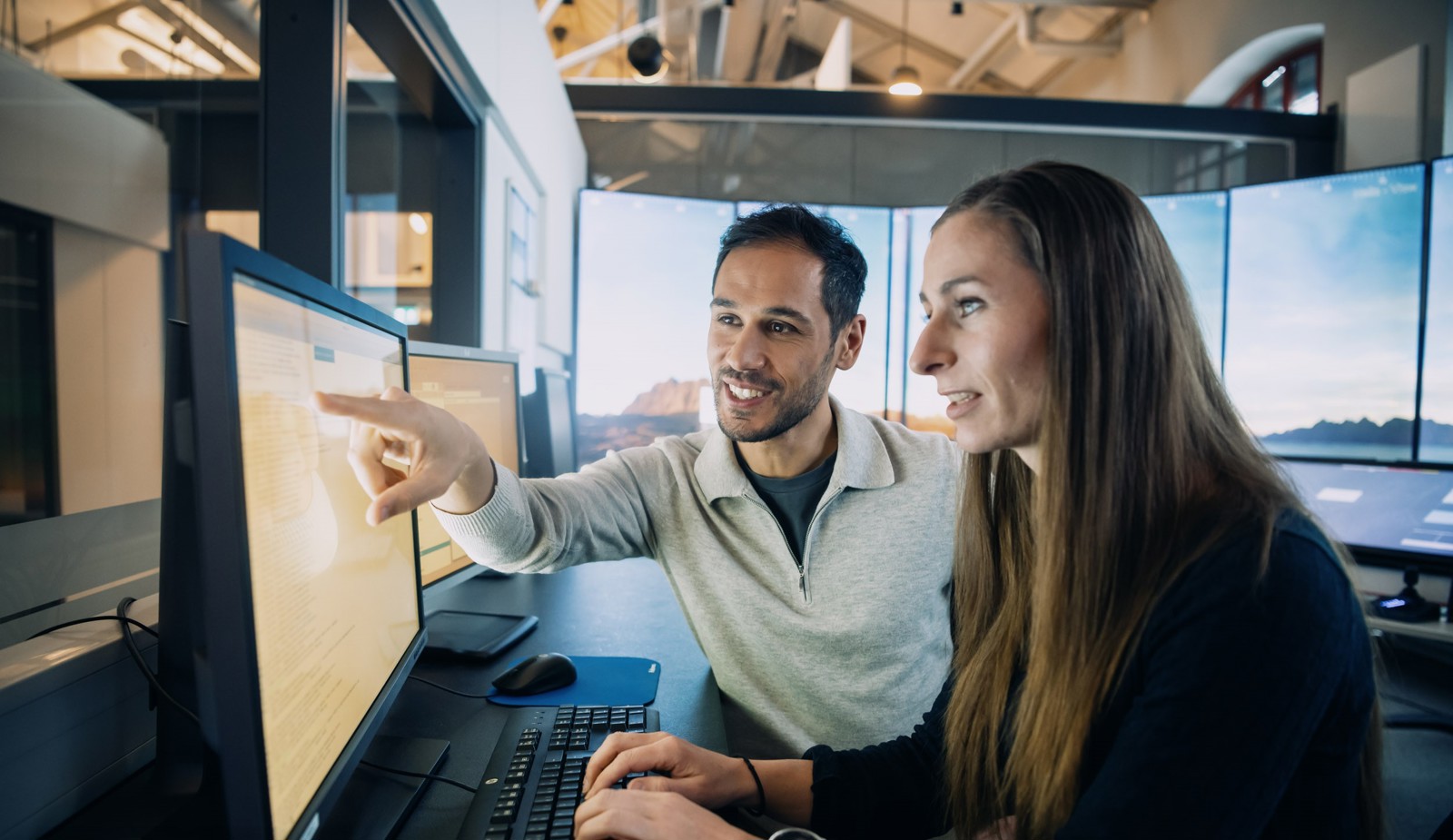
Coding with purpose
In the software environment at Kongsberg Defence & Aerospace, we develop codes for advanced technological products and complex systems with extreme demands on performance and precision. Products that make a difference and help protect people and critical infrastructure.
-
Text:Anita Nyheim / KONGSBERG
What if you got the opportunity to work with software for the Joint Strike Missile (JSM) which is on Norway's new fighter aircraft, the F-35? A missile with a technology so advanced that it recognizes the target, avoids material or infrastructure it is not intended for, and which will destroy itself if it does not find the target.
Or the NASAMS air defence system; recognized for its reliability, accuracy and ease of use, and used by several nations around the world, including Norway, the United States and several NATO countries, to protect key areas and infrastructure from air threats.

In the ever-changing landscape of modern technology, software development is about more than just coding. It is a finely tuned art that depends on the collaboration of different teams, all working to handle today's challenges and prepare for tomorrow's opportunities.
Let us take a closer look at what software development and architecture entails, and how the competent professional environments in Kongsberg Defence & Aerospace are working with this profession.
Software development involves creating and maintaining applications and software systems that meet users' needs. This process involves several key components:
Requirement specifications: This step focuses on understanding and carefully documenting user needs and system requirements to ensure the final software meets expectations.
Design: In this phase, the architecture of the system is designed. It is planned how the different components will interact to form a cohesive and efficient system.
Coding: One or more programming languages are used to transform the design into a functional code. This is the heart of the software development process. Testing: A crucial step in ensuring that the software works as expected. Any errors are identified and corrected during this phase to guarantee the reliability and effectiveness of the software.
Maintenance: After the launch of the software, the maintenance phase is necessary to update and improve the software over time, keeping it relevant and efficient in the face of changing user needs and technological advancements.
Software architecture focuses on defining and structuring the system's main components and their interaction. This includes:
Architecture styles: This involves choosing an appropriate architecture style that suits the system's requirements and objectives, such as microservices or monolithic architecture, to ensure a robust and efficient system.
Design Patterns: Implementing established and proven solutions to tackle common design challenges, such as MVC (Model-View-Controller). This helps to standardize development and improve system maintainability.
Scalability and performance: The architecture design takes into account the system's ability to handle increasing loads and retain high performance. This ensures the system's long-lasting efficiency and reliability, even under changing operating conditions.
Security and privacy: A key factor is implementing robust measures to protect sensitive data and user information. This implies an ongoing focus on security strategies and privacy practices to defend against threats and ensure user trust.
Kongsberg Defence & Aerospace uses a combination of model-based and agile development, with a focus on agile methods such as Scrum. This approach ensures high flexibility, active customer collaboration, and a quick adaptability to any changes. Our teams, which vary in size, work in sprints that typically span two to four weeks. During these sprints, they commit to specific tasks and hold daily status meetings, ensuring continuous progress and effective identification and resolution of challenges.
The programming language we primarily use is C++, which is known for its robustness and capabilities suitable for complex and high-tech systems. In addition, we operate on multiple platforms, including both Windows and Linux operating systems. This diversity in both development methods and technologies ensures that we can meet our unique requirements for both performance and reliability in our advanced projects.

“What I like best about my job is the varied working days. I get to meet many different people and professional environments, be in the lab and test how the system we have developed works, be in the production hall and physically see how the products work, look at the assembly of all components, travel to subcontractors to assist with integration of their products and to customers to check that the product works according to the requirement specifications.”-Trine, Software Architect Integrated Defence Systems.
In our software environment you will find a dynamic team of developers and architects, spread over different divisions and product areas. We have organized ourselves into smaller, specialized teams, each deeply focused on carving out the best solutions. Some of these teams dive into specific products, while others work on unique projects. We place great emphasis on making sure that our newcomers feel welcome and become a natural part of the team, both socially and academically. It's about creating a working environment that is rich in knowledge and supports good collaboration.
“With us, no one works alone, everyone is part of a team," says Elin Lintvedt, department manager for the software group in the Missile Systems division.
And that's no coincidence. It is about belonging, dynamism and competence exchange. Not least because a large proportion of the developers are young expats who come straight from school without a network.
For the same reason, several departments have established their own "social committee" that organizes various social activities, both at work and in their spare time, and facilitates an inclusive environment where employees can thrive and grow.
The departments consist of many different personalities, but they have some common traits; Everyone is very proud of the products we make and holds ownership of them, they are curious and share their knowledge. Also, they like gaming.
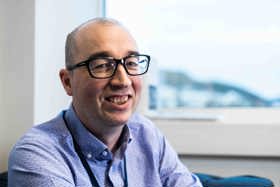
“It's probably no surprise that we're a bunch of gamers and like to spend time in front of screens both on and off work.”– Håvard, Senior Software Architect Division Land Systems.
The people we are looking for are passionate about software and system development. Professional excellence weighs heavily, but also a genuine interest in developing innovative solutions in technology.
To strengthen and expand this expertise, we place great emphasis on internal training. This ensures that our employees stay up to date with the latest trends and technologies, and constantly improve their skills.
On the personal front, we search for individuals who are fearless, take responsibility, and are not reluctant to try new things. We are looking for those who have a strong professional insight and the ability to develop high-quality software, and who are thorough in their approach to testing and quality assurance.
“It’s an art to create good, maintainable software that does not overcomplicate things, but develop simple solutions that work well.” – Øyvind Ødeskaug, Head of Department Land Systems.
Technology and innovation
We are actively working to keep up with the rapidly changing technological trends through exciting projects dedicated to development and modernization. The goal is to halve delivery times and increase automation in our software development process. This means renewing the development platforms we have and replacing the traditional tools with more modern and efficient alternatives.
We are also committed to integrating new technologies, such as the latest generation of weapon station software, Mainline 5. In addition, we offer great opportunities for career progression, from junior roles to senior positions, and on to roles in architecture or management.
Although we are cautious about the use of artificial intelligence (AI), especially in operational products, we see the great potential AI has in many applications. We emphasize the responsible and safe use of AI to foster innovation and efficiency.
